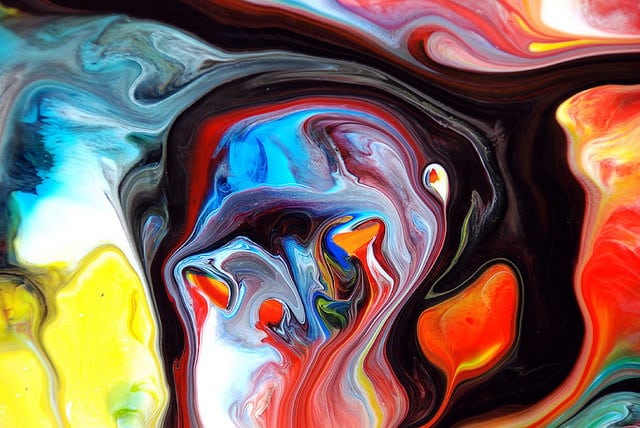Art – a Creative Process or a Therapeutic Tool?

The field of psychology covers a broad spectrum of human interactions. When applied to mental health there are many preconceived ideas of the role of psychology. For many the place of psychology is limited to testing and psychotherapy. It may be surprising to learn that there is a field of human experience where psychology plays an important role. That field is beauty and all things associated with it. Which brings us to the topic at hand: using art as a therapy.
Most have no problem understanding the common definition of therapy. Add to the term therapy the word art and the result is a final term: art therapy. Suddenly, for some the meaning may become a bit less clear. Among psychology professionals and lay persons the concept of art therapy is often misunderstood. In fact, there are some settings where art therapy is given a secondary role of being an activity, a way of filling time and is is usually run by therapy aides.
According to Wikipedia’s definition of art therapy: “Art therapy is a mental health profession that uses the creative process of art”. As a professional extension of mental health services art therapy is a relatively new with its modern day introduction occurring in English speaking and European countries in the mid-20th century.
Among its critics are mostly traditional psychotherapists who view the only valid use of psychotherapy to be a talk therapy session. The idea of beauty having a psychological value seems irrational to many. Ironically, the very foundation of art therapy is Freud’s theory of unconscious and it is built on assertion that visual images are the simplest and most natural form of human expression and experience.
There are many other mental health professionals who have grasped the psycho-therapeutic value of art therapy. Those values include the use of art, as either something the client does or appreciates; meeting certain psychological needs. Among the areas of life that may improve through the use of art therapy self-expression, coping skills, managing stress, and strengthening a sense of self.
The value of art therapy in a therapeutic setting varies. Many professionals don’t understand its value and underutilize it. With its foundation found among several areas of psychology, including aesthetics, psychiatry, psychoanalysis, rehabilitation, early childhood education, and art education the value of art therapy as a legitimate psychotherapeutic tool deserves reevaluation among those practices where it is not offered.
Depending on the culture of a given area the practice of art therapy can be found in many settings, including:
- Private practice offices
- Mental health centers
- Hospitals
- Rehab centers
- Schools
- Nursing homes
- Home health care
- Prisons
Another sometimes surprising aspect of art therapy is the range of people who can benefit from it. It is available to people from preschoolers to the elderly. In most cases it is also free of the confines of a client having to meet certain levels of cognitive functioning.
In most provinces or states in North America the delivery of art therapy as a psychotherapeutic modality requires licensing. This is dependent on the regulations of a particular state. Some states license applicants specifically to practice art therapy. Other states will use a broader definition, including most categories of licensed therapists.
Who benefits from art therapy? As we will explain in just a moment art therapy can be a powerful tool adaptable to a range of human problems, including:
- Pediatric Trauma Patients
- Prison inmates with depression or control issues
- Those with cognitive impairments
- The mentally or developmentally disabled
- Victims of trauma
- Those with inadequate problem solving skills
If we were able to sneak a look into an art therapy session we would find that in most instances art therapy is conducted in a group setting. The participants would be seated at larger tables to foster social skills. Group members will have been selected based on clear therapeutic goals and expectations. Each participant is aware of the purpose of their activity. And, the therapist is actively engaged both with the group process and the individual needs of the group members.
To the uninitiated art therapy can seem like nothing more than busy work with no real purpose. This is where the role of psychology in general and more specifically the psychology of beauty have an important role. There are many proven psychological benefits gained through the application of art therapy. These include:
How to resolve conflicts: In a group setting, the use of a piece of art that some believe to be beautiful while others in the group think it sucks creates conflict. Helping each side understand the other side’s point of view has an important role in teaching conflict resolution.
Improve interpersonal skills: Facilitating a discussion on the merits of the beauty of a piece of art requires that participants sharpen their interpersonal skills.
Manage problematic behaviors: By making the focus of an activity the art rather than the persons involved a reduction in problem behaviors usually follows. This same principle holds true if the focus is to reduce negative stress,
Achieve personal insight: Among the benefits often underestimated in the application of art therapy is an increased in personal insight. Many participants surprise themselves at their ability to see and understand subtle insights into a particular work of art.
Then there is the opportunities to enjoy the life-affirming pleasures of art making. All because of the efforts put forth through art therapy.
Image Credit: flickr.com/photos/markchadwick/14281021286